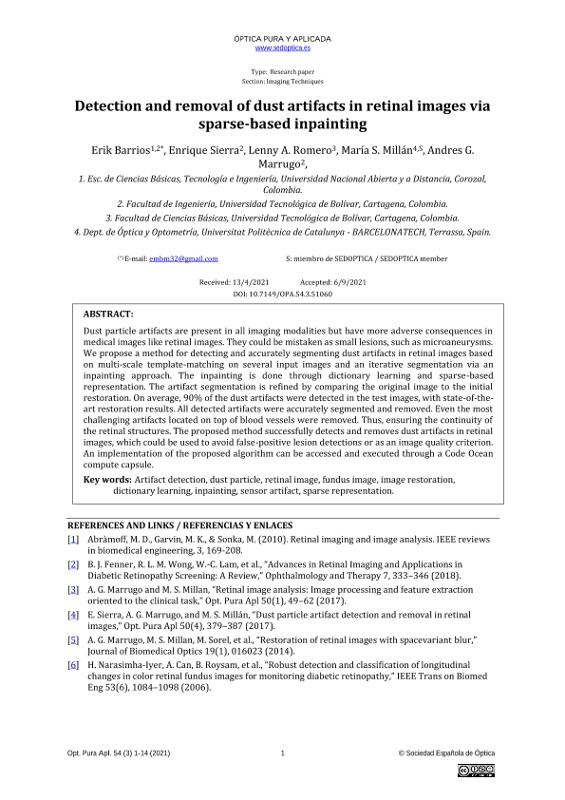Resumen
Dust particle artifacts are present in all imaging modalities but have more adverse consequences in
medical images like retinal images. They could be mistaken as small lesions, such as microaneurysms.
We propose a method for detecting and accurately segmenting dust artifacts in retinal images based
on multi-scale template-matching on several input images and an iterative segmentation via an
inpainting approach. The inpainting is done through dictionary learning and sparse-based representation. The artifact segmentation is refined by comparing the original image to the initial restoration. On average, 90% of the dust artifacts were detected in the test images, with state-of-theart restoration results. All detected artifacts were accurately segmented and removed. Even the most challenging artifacts located on top of blood vessels were removed. Thus, ensuring the continuity of the retinal structures. The proposed method successfully detects and removes dust artifacts in retinal images, which could be used to avoid false-positive lesion detections or as an image quality criterion. An implementation of the proposed algorithm can be accessed and executed through a Code Ocean compute capsule














